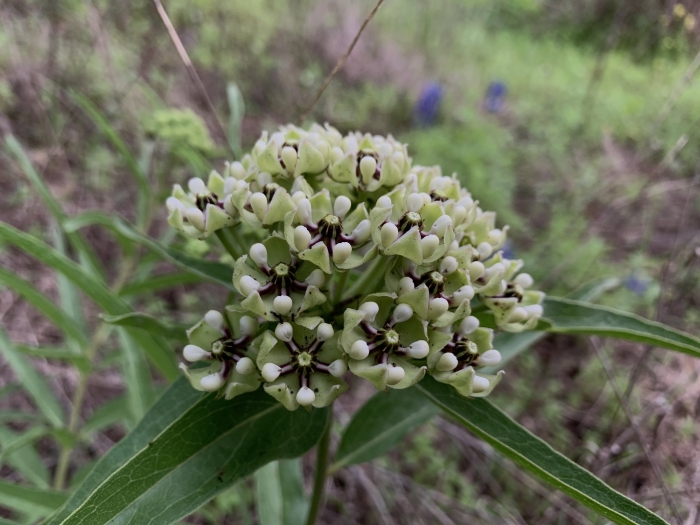Spider Milkweed
(Asclepias asperula)
Spider Milkweed (Asclepias asperula)
/
/

Brad Grimm
CC BY 4.0
Image By:
Brad Grimm
Recorded By:
Copyright:
CC BY 4.0
Copyright Notice:
Photo by: Brad Grimm | License Type: CC BY 4.0 | License URL: http://creativecommons.org/licenses/by/4.0/ | Rights Holder: Brad Grimm | Publisher: iNaturalist | Date Created: 2020-04-08T15:16:46Z |




















































Estimated Native Range
Summary
Asclepias asperula, commonly known as Spider Milkweed or Antelope Horns, is a perennial herb native to open woodlands, prairies, and grasslands in the South Central USA and Mexico. It typically grows to 0.3–0.9 m (1–3 ft) tall, featuring clustered greenish-yellow flowers with maroon highlights that bloom from April through June. The plant’s distinctive seed pods, which resemble the horns of an antelope, give it one of its common names. Spider Milkweed’s flowers are tennis ball-sized clusters of small green, purple, and white flowers, with each flower having 5 pale green petals that cup upward around 5 prominent white hoods storing nectar.
Spider Milkweed is celebrated for its ecological role as a major food source for Monarch and Queen butterfly caterpillars, contributing to butterfly conservation efforts. Its toxic properties make Monarch and Queen butterflies unpalatable to predators, providing a natural defense mechanism. This species is also valued for its unique flower structure and is used in native plant gardens, pollinator gardens, and restoration projects. It requires well-drained soil rich in inorganic matter, such as sand and rock chips, but can tolerate loam and clay if drainage is adequate. Spider Milkweed has a deep taproot, necessitating deep pots for container growth and careful avoidance of waterlogged conditions. It thrives in full sun and is drought-tolerant once established, requiring low to medium amounts of water.CC BY-SA 4.0
Spider Milkweed is celebrated for its ecological role as a major food source for Monarch and Queen butterfly caterpillars, contributing to butterfly conservation efforts. Its toxic properties make Monarch and Queen butterflies unpalatable to predators, providing a natural defense mechanism. This species is also valued for its unique flower structure and is used in native plant gardens, pollinator gardens, and restoration projects. It requires well-drained soil rich in inorganic matter, such as sand and rock chips, but can tolerate loam and clay if drainage is adequate. Spider Milkweed has a deep taproot, necessitating deep pots for container growth and careful avoidance of waterlogged conditions. It thrives in full sun and is drought-tolerant once established, requiring low to medium amounts of water.CC BY-SA 4.0
Plant Description
- Plant Type: Herb
- Height: 2-2.5 feet
- Width: 2-3 feet
- Growth Rate: Moderate
- Flower Color: Green, Purple
- Flowering Season: Spring, Summer
- Leaf Retention: Deciduous
Growth Requirements
- Sun: Full Sun, Part Shade
- Water: Medium
- Drainage: Medium, Slow
Common Uses
Bee Garden, Bird Garden, Butterfly Garden, Deer Resistant, Drought Tolerant, Edible*Disclaimer: Easyscape's listed plant edibility is for informational use. Always verify the safety and proper identification of any plant before consumption., Fragrant, Hummingbird Garden, Low Maintenance, Rock Garden, Street Planting
Natural Habitat
Open woodlands, prairies, and grasslands in the South Central USA and Mexico
Other Names
Common Names: Antelope Horns Milkweed , Antelope Horns , Immortal
Scientific Names: Asclepias asperula , Asclepias asperula var. asperula
GBIF Accepted Name: Asclepias asperula (Decne.) Woodson